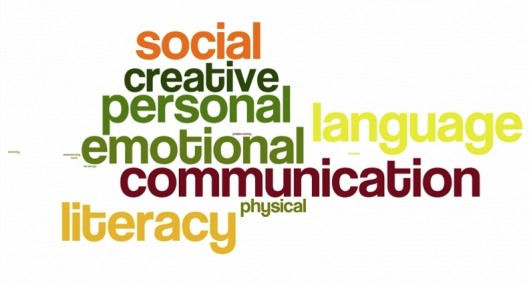|
In evaluation, looking at outcomes is vital. When you've invested in a project of course you'll need to know what was achieved and where there are still gaps. But it can be cumbersome reading mounds and mounds of text in a report. Charts, graphs and percentages can help clarify, but can still make for dull reading (and for some feel too much like maths homework).
To help busy partners to any project, finding a variety of ways to report on activity can make all the difference between people remembering what went well and being able to advocate the value of their work... or not. I've recently been creating a toolkit for early years practitioners looking at how creative engagement can help achieve new and unexpected results. Its aim is to be quickly digestible and highly practical. The toolkit is based on the activity of ten creative early years projects in schools and Children's Centres in the North of England. The projects were mapped against the Early Years Foundation Stage six areas of learning. To illustrate which of the EYFS outcomes the projects really brought to life, I used wordle to create this at a glance illustration. The larger the word, the more presence it had in the projects. You can see here Personal, Social and Emotional development was the strongest feature across the programme overall. It doesn't replace the need for writing other information in the report of course. However the teachers, children's centre staff and creative practitioners involved, and readers of the toolkit, can now instantly see where the projects thrived and what kinds of outcomes similar work might expect to achieve, so much more quickly and easily than deciphering a big chunk of writing or trying to analyse a graph.
0 Comments
Your comment will be posted after it is approved.
Leave a Reply. |
Details
...BlogI'm most interested in how the public, your public, whoever that may be, engages with culture and creativity.
And if it nurtures creativity and develops personal, social or professional skills I'm absolutely all ears. Categories
All
Archives
May 2023
|



 RSS Feed
RSS Feed
